use-of-the-term-dyslexia
Use of the Term Dyslexia
“Dyslexia is best thought of as a continuum,
not a distinct category, and there are no clear cut-off points. Until recently, a child was deemed to either have or not have dyslexia. It is now recognised that there is no sharp dividing line between having a learning difficulty such as dyslexia and not having it.”The Rose Report (2009)
The continuum, from mild to severe, helps to account for the differences in how pupils respond to support and intervention.
This approach should also help parents to understand the reluctance of some schools to seek a formal identification when a pupil is making satisfactory/good progress. What is important is that literacy difficulties are identified and addressed so that the pupil makes progress, whether or not these difficulties are described in terms of dyslexia.
When all the information is gathered from the comprehensive assessment, a programme of support/ intervention can be drawn up to meet the needs of the pupil with persistent difficulties. This is likely to be the stage where, for some pupils, a formal identification of dyslexia is made. A formal identification of dyslexia has to involve an appropriately qualified specialist teacher or other professional such as an educational psychologist.
The development of the personalised programme should include the specialist teacher, the SENCO, the parents/carers and the pupil. Older pupils may have particular views that need to be incorporated. The programme will require all teachers involved with the pupil to be aware of his/her needs and to make adjustments to their teaching where necessary.
The individualised elements have to address the main literacy difficulties and needs of the pupil. As the pupil develops, there will be value in incorporating independent study skills and strategies for later life. Regular evaluation is required to check the impact of the programme and ensure progress is maintained. The evaluation should use a range of progress data, including standardised test results, and draw upon the pupil’s perspective.
What article would you like to read?
1. Choosing an Intervention for pupils with Literacy Difficulties and/or Dyslexia
3. Children with Persistent Literacy Difficulties
4. Specialist Advice and Support
6. Role of the Specialist Teacher
7. Identifying and Teaching Children and Young People with Dyslexia and Literacy Difficulties (2009)
